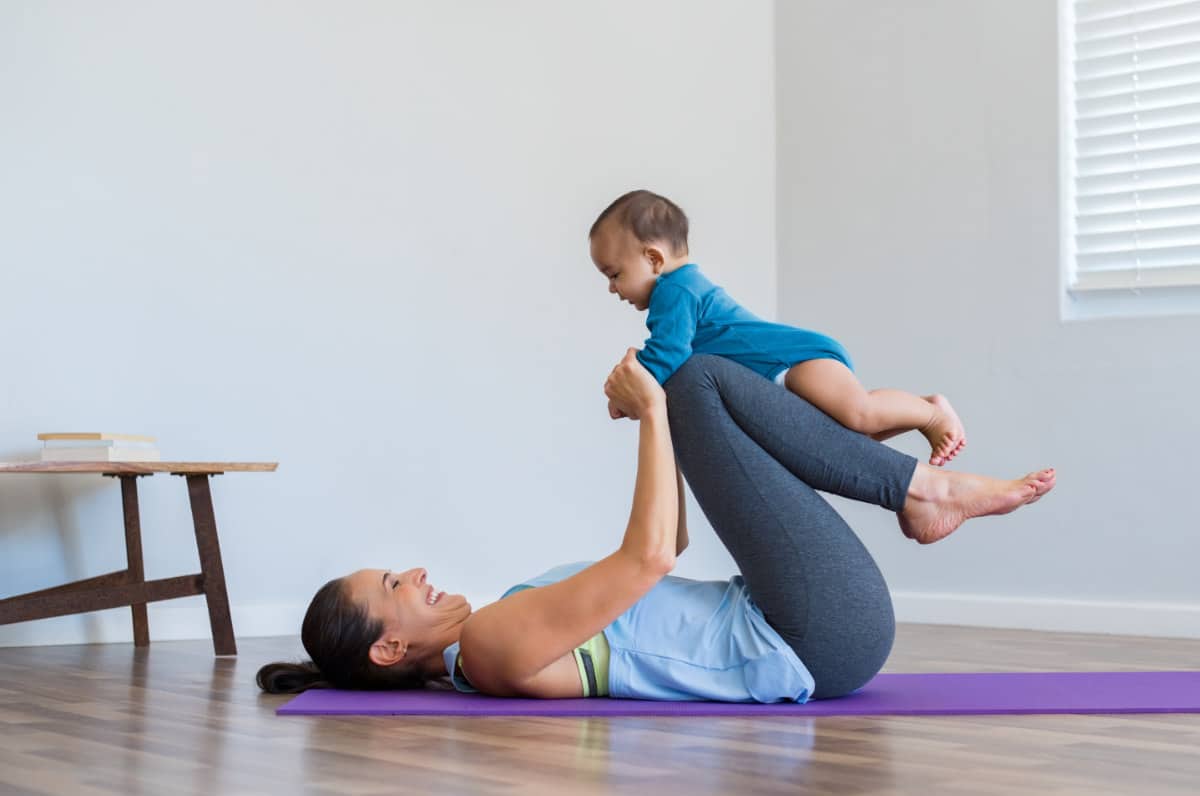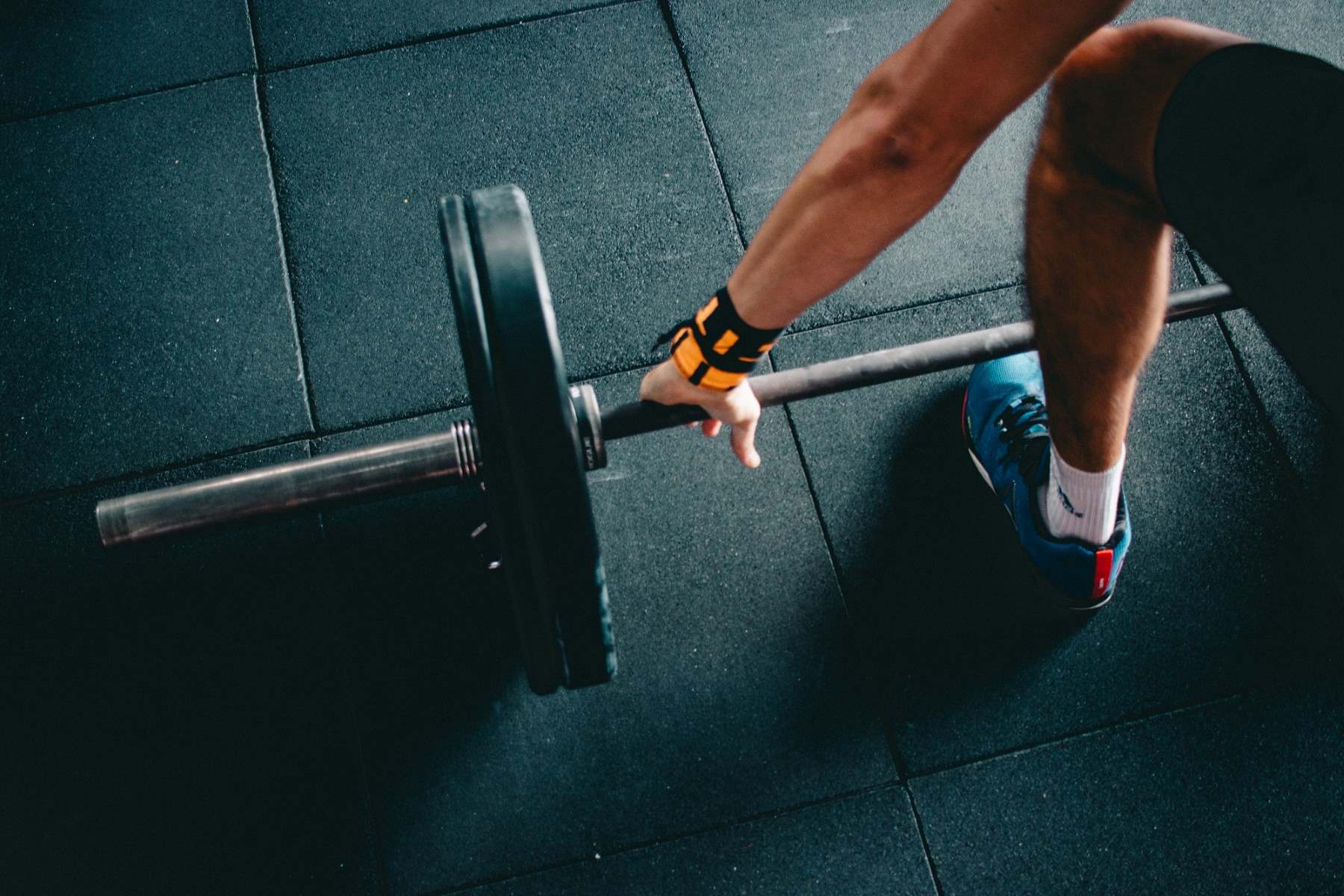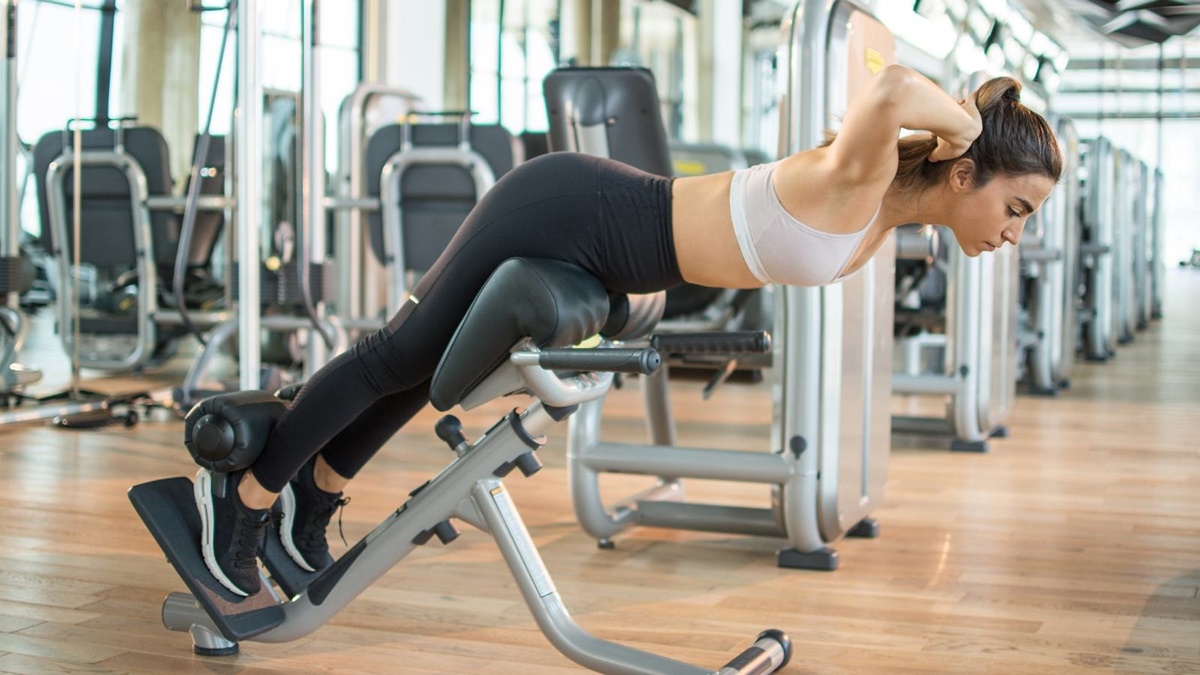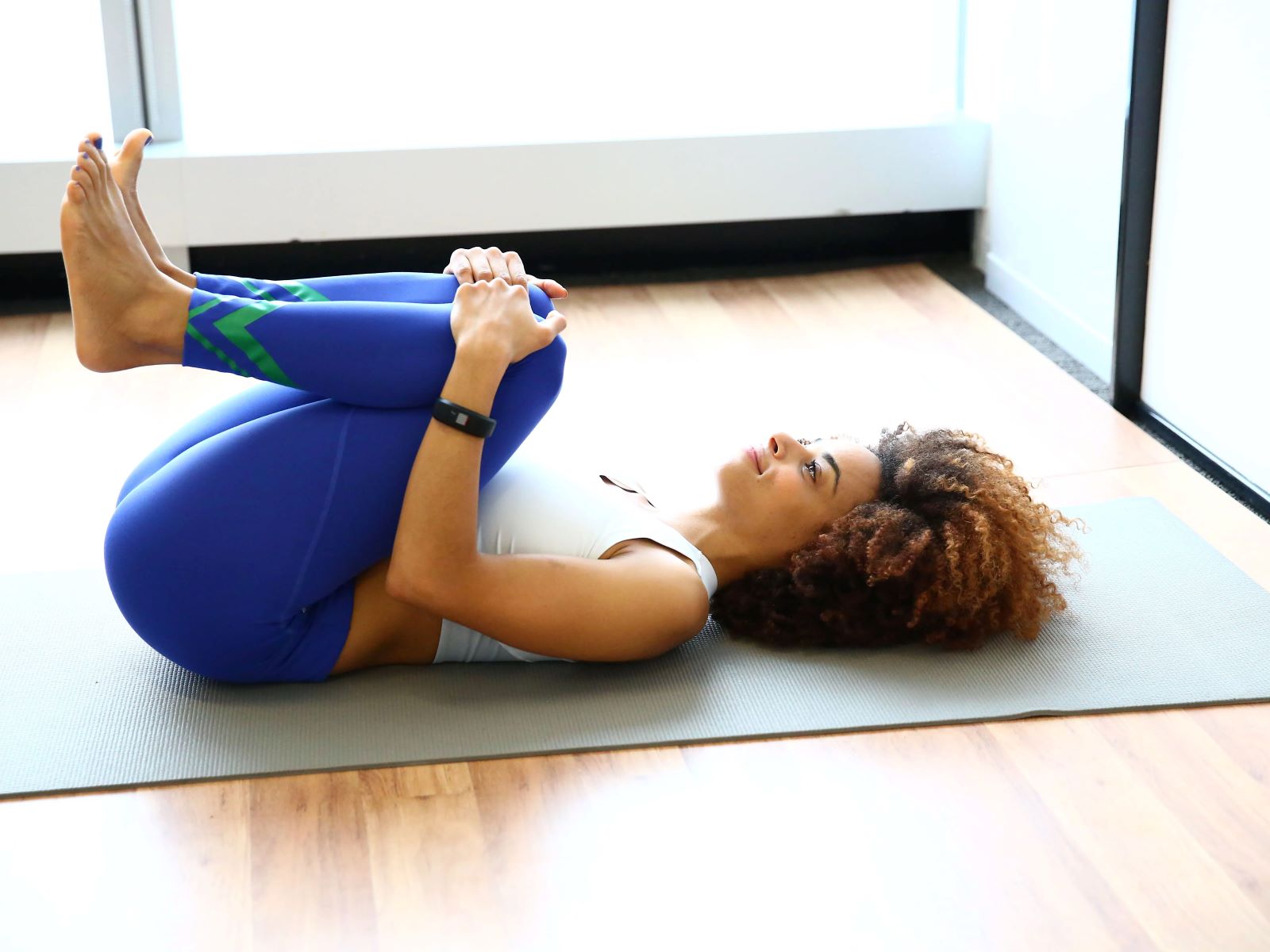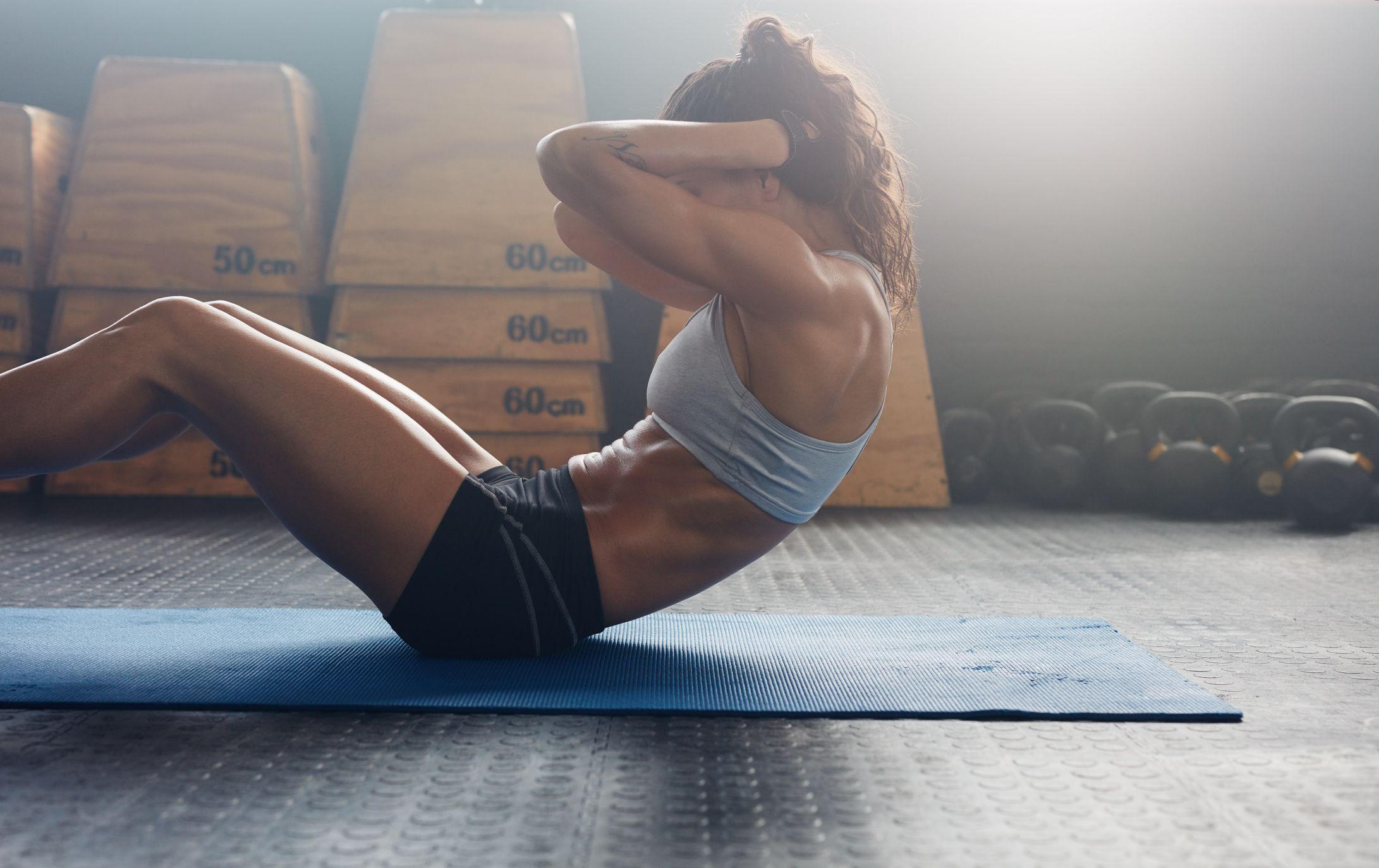

Featured
What Workout To Lose Belly Fat
Modified: January 2, 2024
Discover the featured workout to effectively lose belly fat and achieve your fitness goals. Get started on your journey to a toned stomach now!
Introduction
Welcome to our comprehensive guide on losing belly fat through targeted workouts. Many people struggle with excess belly fat, which not only affects their confidence but also poses health risks. Belly fat, also known as visceral fat, is more than just a cosmetic issue – it is a type of fat that surrounds the organs in the abdominal cavity and can contribute to various health conditions such as type 2 diabetes, heart disease, and metabolic syndrome.
While it is important to note that spot reduction is not possible, engaging in specific exercises can help you tone and strengthen your abdominal muscles, resulting in a flatter stomach. However, it is crucial to understand that losing belly fat requires a comprehensive approach that includes diet modifications, lifestyle changes, and a combination of different types of exercises.
In this article, we will guide you through an array of exercises and workouts that can aid in shedding belly fat. From cardiovascular exercises to strength training, high-intensity interval training (HIIT) workouts, and core strengthening exercises, we will outline the most effective methods to help you achieve your fitness goals.
Before we delve into specific workouts, it is important to note that consistency, patience, and a holistic approach are key when it comes to losing belly fat. Incorporating these exercises into your fitness routine, along with a balanced diet and healthy lifestyle choices, will contribute to your overall well-being and help you achieve a toned and flat stomach.
Understanding Belly Fat
Before we explore the various workouts to lose belly fat, it is important to have a basic understanding of what belly fat is and why it can be challenging to get rid of. Belly fat, also known as visceral fat, is the fat that accumulates around the organs in the abdominal cavity. Unlike subcutaneous fat, which is found just beneath the skin, visceral fat is deeper and can surround vital organs like the liver, pancreas, and intestines.
Visceral fat is not just an aesthetic concern; it is also a health concern. Research has shown that excessive belly fat is linked to a higher risk of developing chronic conditions such as type 2 diabetes, heart disease, and certain cancers. Additionally, belly fat is metabolically active and produces hormones and chemicals that can disrupt the normal functioning of the body.
There are several factors that contribute to the accumulation of belly fat, including genetics, hormonal imbalances, poor diet, lack of physical activity, and high-stress levels. While it is difficult to target fat loss in a specific area of the body, adopting healthy lifestyle habits and engaging in specific exercises can help reduce overall body fat, including belly fat.
It is important to note that everyone’s body is different, and some individuals may naturally carry more fat around their midsection. Therefore, the goal should not be to achieve a specific body shape, but rather to promote overall health and well-being. With consistent effort and a combination of targeted workouts and healthy habits, you can work towards reducing belly fat and improving your overall body composition.
Importance of Exercise in Losing Belly Fat
When it comes to losing belly fat, exercise plays a crucial role. While diet is an essential component of weight loss, regular physical activity can help accelerate fat burning and specifically target belly fat. Here are some key reasons why exercise is important in losing belly fat:
1. Calorie Expenditure: Engaging in physical activity helps burn calories, which in turn leads to a calorie deficit. When you consume fewer calories than your body requires, it begins to tap into stored fat for energy. This includes belly fat.
2. Increased Metabolic Rate: Regular exercise can boost your metabolism, leading to an increase in the number of calories your body burns at rest. This not only helps with overall weight loss, but also assists in reducing belly fat.
3. Reduction in Visceral Fat: Exercise has been shown to be effective in reducing visceral fat, the type of fat that accumulates around the organs in the abdominal cavity. By incorporating a combination of cardiovascular exercises, strength training, and core exercises into your routine, you can effectively decrease belly fat.
4. Improved Insulin Sensitivity: Insulin resistance is a common issue in individuals with excess belly fat, which can lead to the development of type 2 diabetes. Regular exercise helps improve insulin sensitivity, allowing your body to better regulate blood sugar levels and reduce the risk of developing diabetes.
5. Enhanced Overall Health: Engaging in regular physical activity has numerous benefits for your overall health. It can help lower blood pressure, improve cholesterol levels, boost cardiovascular health, strengthen bones and muscles, and improve mental well-being. All of these factors contribute to a healthier body and can aid in shedding unwanted belly fat.
It is important to note that while exercise is crucial for losing belly fat, it should be combined with a balanced diet and other healthy lifestyle choices to maximize results. Consistency and adherence to a comprehensive approach are key to achieving and maintaining a flat stomach.
Cardiovascular Exercises to Lose Belly Fat
Cardiovascular exercises, also known as aerobic exercises, are excellent for burning calories and promoting overall fat loss, including belly fat. These exercises raise your heart rate, increase oxygen intake, and help mobilize stored fat for energy. Here are some effective cardiovascular exercises to incorporate into your routine:
- Running or Jogging: Running or jogging is a highly effective exercise for burning calories and targeting belly fat. It can be done outdoors or on a treadmill, and you can gradually increase your speed and distance as your fitness improves.
- Cycling: Cycling is a low-impact exercise that can be done outdoors or indoors on a stationary bike. It not only works your leg muscles but also engages your core, making it an effective workout for toning your entire body and burning calories.
- Swimming: Swimming is a full-body workout that provides resistance and helps burn a significant amount of calories. It is also low-impact, making it suitable for individuals with joint issues or those looking for a refreshing workout.
- Jumping Rope: Jumping rope is a high-intensity exercise that engages your core, arms, and legs. It is a calorie-burning workout that can be done almost anywhere, making it a convenient option for losing belly fat.
- High-Intensity Interval Training (HIIT): HIIT workouts involve short bursts of intense exercise followed by periods of rest or lower intensity. This type of training has been shown to be effective in burning calories and promoting fat loss, including belly fat. You can incorporate exercises like burpees, mountain climbers, and squat jumps into your HIIT routine.
When incorporating cardiovascular exercises into your routine, aim for at least 150 minutes of moderate-intensity exercise or 75 minutes of vigorous-intensity exercise per week, as recommended by health organizations. Remember to start at a comfortable intensity and gradually increase the difficulty as your fitness improves. Consistency and regularity are key to achieving optimal results.
Strength Training Exercises to Lose Belly Fat
While cardiovascular exercises are effective for burning calories and promoting overall fat loss, incorporating strength training exercises into your routine is equally important for losing belly fat. Strength training helps build lean muscle mass, which not only boosts your metabolism but also gives your body a more toned and defined appearance. Here are some effective strength training exercises to help you lose belly fat:
- Planks: Planks are a great exercise for targeting your core muscles, including your abdominals. Begin in a push-up position, resting your forearms on the ground. Engage your core muscles and hold this position for as long as you can, making sure to maintain proper form.
- Crunches: Crunches specifically target the abdominal muscles and can help strengthen them. Lie on your back with your knees bent and feet flat on the ground. Place your hands behind your head, contract your abs, and lift your head, neck, and shoulders off the ground. Lower back down with control and repeat.
- Russian Twists: Russian twists engage your core and oblique muscles. Sit on the ground with your knees bent and feet lifted off the ground. Hold a weight or medicine ball in front of your chest and twist your torso from side to side, tapping the weight on the ground on each side.
- Deadlifts: Deadlifts are a compound exercise that targets multiple muscle groups, including your core. Stand with your feet shoulder-width apart and hold a barbell or dumbbells in front of your thighs. Keeping your back straight, hinge forward from your hips and lower the weight towards the ground. Engage your core and lift the weight back up, squeezing your glutes at the top.
- Leg Raises: Leg raises primarily target your lower abs. Lie on your back, place your hands underneath your lower back, and lift your legs off the ground, keeping them straight. Lower your legs back down without touching the ground and repeat.
Incorporate strength training exercises into your routine at least two to three times a week, giving your muscles time to rest and recover in between sessions. Gradually increase the resistance or weight as your strength improves. Remember, consistency and proper form are key to achieving the best results.
High-Intensity Interval Training (HIIT) Workouts for Belly Fat Loss
High-Intensity Interval Training (HIIT) is a highly effective workout method for losing belly fat. These workouts involve short bursts of intense exercise followed by brief periods of rest or lower-intensity activity. HIIT workouts are known to be time-efficient, yet highly effective in burning calories and promoting fat loss. Here’s how you can incorporate HIIT into your routine:
- Sprints: Sprinting is a classic HIIT exercise that can be done outdoors or on a treadmill. Start with a brief warm-up, then sprint at maximum effort for around 30 seconds. Recover by walking or lightly jogging for a minute or two before repeating the sprint.
- Interval Training on Cardio Equipment: On a stationary bike, elliptical machine, or rowing machine, alternate between high-intensity intervals and recovery periods. For example, pedal or row at maximum effort for 30 seconds, then slow down and recover for one minute. Repeat this pattern for the desired duration of your workout.
- Circuit Training: Set up a circuit with a combination of exercises such as burpees, jump squats, push-ups, mountain climbers, and kettlebell swings. Perform each exercise at maximum effort for 30 seconds, followed by a 10-15 second rest before moving on to the next exercise. Complete the circuit 3-4 times for an effective HIIT workout.
- Tabata Training: Tabata training is a specific type of HIIT that involves 20 seconds of all-out effort followed by 10 seconds of rest, repeated for a total of 4 minutes. You can choose exercises like jumping jacks, burpees, or kettlebell swings and perform them in the Tabata format.
HIIT workouts can be modified to suit your fitness level and preferences. The key is to push yourself to your maximum effort during the intense intervals and recover adequately during the rest periods. Aim for a total duration of 20-30 minutes for your HIIT sessions, including warm-up and cool-down.
It’s important to note that HIIT workouts can be physically demanding, so it’s essential to listen to your body and start at a level that is challenging but still manageable for you. As always, consult with a healthcare professional before starting any new exercise program, especially if you have any pre-existing health conditions or injuries.
Core Strengthening Exercises for a Flat Stomach
In addition to cardiovascular and strength training exercises, incorporating core strengthening exercises into your workout routine is crucial for developing a flat stomach and toning your abdominal muscles. Here are some effective exercises to target your core:
- Plank: The plank is a classic core exercise that engages your entire abdominal muscles. Begin in a push-up position with your hands directly beneath your shoulders. Engage your core and hold this position for as long as you can while maintaining proper form. Aim to gradually increase your plank hold time as your strength improves.
- Crunches: Crunches are a traditional exercise that targets the upper abdominal muscles. Lie on your back with your knees bent and feet flat on the ground. Place your hands behind your head, contract your abs, and lift your head, neck, and shoulders off the ground. Lower back down with control and repeat for the desired number of repetitions.
- Leg Raises: Leg raises primarily target the lower abdominal muscles. Lie flat on your back with your legs extended. Keep your lower back pressed into the ground and lift your legs off the ground, keeping them straight. Lower your legs back down with control and repeat.
- Bicycle Crunches: Bicycle crunches engage both the upper and lower abdominal muscles as well as the obliques. Lie on your back with your knees bent and hands behind your head. Lift your head, neck, and shoulders off the ground and simultaneously bring one knee towards your chest while twisting to touch your opposite elbow to that knee. Alternate sides in a pedaling motion.
- Plank Side Twists: This exercise targets the oblique muscles. Start in a forearm plank position. Rotate your hips and touch one hip to the ground, then return to the starting position and repeat on the other side. Keep your core engaged and your body in a straight line throughout the movement.
It is important to perform these exercises with proper form to effectively engage the targeted muscles and prevent injury. Start with a number of repetitions and sets that challenge you without overexerting yourself, and gradually increase the intensity as you build strength.
Remember, while core exercises are crucial for building abdominal strength and toning, they alone cannot spot reduce belly fat. It is important to incorporate a combination of cardiovascular exercises, strength training, and a healthy diet to achieve overall fat loss, including from the abdominal area.
Other Lifestyle Factors to Consider for Belly Fat Loss
While exercise is essential for losing belly fat, it is important to remember that it is just one piece of the puzzle. There are other lifestyle factors that play a role in achieving your fitness goals. Here are some additional factors to consider for belly fat loss:
- Healthy Diet: A nutritious and balanced diet is crucial for losing belly fat. Focus on consuming whole, unprocessed foods such as fruits, vegetables, lean proteins, whole grains, and healthy fats. Limit your intake of sugary snacks, processed foods, and drinks that are high in calories and added sugars.
- Portion Control: Pay attention to portion sizes to avoid overeating. Be mindful of your hunger and fullness cues and eat until you are satisfied, not overly stuffed. Consider using smaller plates and bowls to help control portion sizes.
- Adequate Sleep: Lack of sleep can disrupt the hormones responsible for appetite control and lead to weight gain. Aim for 7-8 hours of quality sleep each night to support your weight loss efforts.
- Stress Management: Chronic stress can contribute to the accumulation of belly fat. Find healthy ways to manage stress such as practicing meditation, deep breathing exercises, yoga, or engaging in hobbies that bring you joy and relaxation.
- Hydration: Staying hydrated is essential for overall health and can support weight loss efforts. Drink an adequate amount of water throughout the day and limit your intake of sugary beverages.
- Consistency: Consistency is key when it comes to losing belly fat. Stick to your exercise routine, maintain a healthy diet, and make lifestyle changes that are sustainable for the long term.
Remember, every individual’s journey towards losing belly fat is unique. It is important to find a balanced approach that works for you and to seek guidance from healthcare professionals or certified fitness experts if needed.
By incorporating these lifestyle factors alongside exercise, you can create a holistic and effective approach to losing belly fat and achieving your desired fitness goals.
Conclusion
In conclusion, losing belly fat requires a comprehensive approach that includes targeted workouts, a healthy diet, and lifestyle modifications. While spot reduction is not possible, engaging in regular exercise can help strengthen your core muscles, burn calories, and promote overall fat loss, including from the abdominal area.
Cardiovascular exercises such as running, cycling, swimming, and high-intensity interval training (HIIT) are effective for burning calories and reducing belly fat. Strength training exercises help build lean muscle mass, boost metabolism, and give your body a more toned appearance. Core strengthening exercises like planks, crunches, and leg raises specifically target the abdominal muscles and contribute to a flatter stomach.
However, it is important to remember that exercise alone is not enough. Other lifestyle factors such as maintaining a healthy diet, practicing portion control, getting adequate sleep, managing stress, and staying hydrated are equally important in losing belly fat.
Each person’s journey to losing belly fat may differ, so it is essential to find an approach that works best for you and your body. Consult with healthcare professionals or certified fitness experts for personalized guidance and support.
Remember, achieving a flat stomach and losing belly fat takes time, consistency, and patience. Embrace a holistic approach to your health and well-being, and celebrate the progress you make along the way. With dedication and perseverance, you can achieve your fitness goals and enjoy the benefits of a healthier, more confident you.
